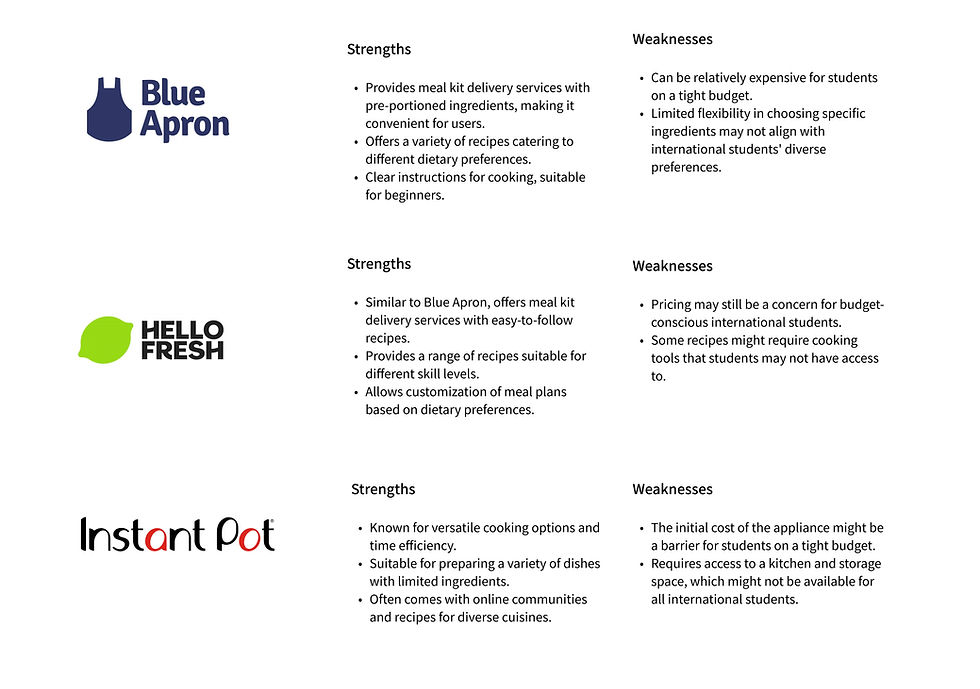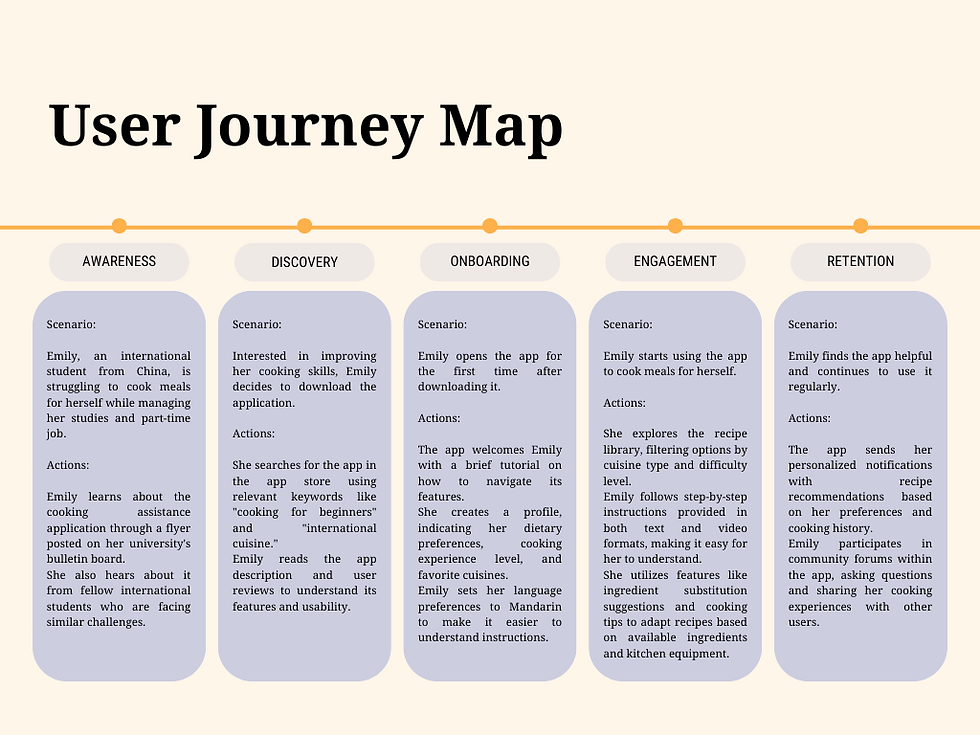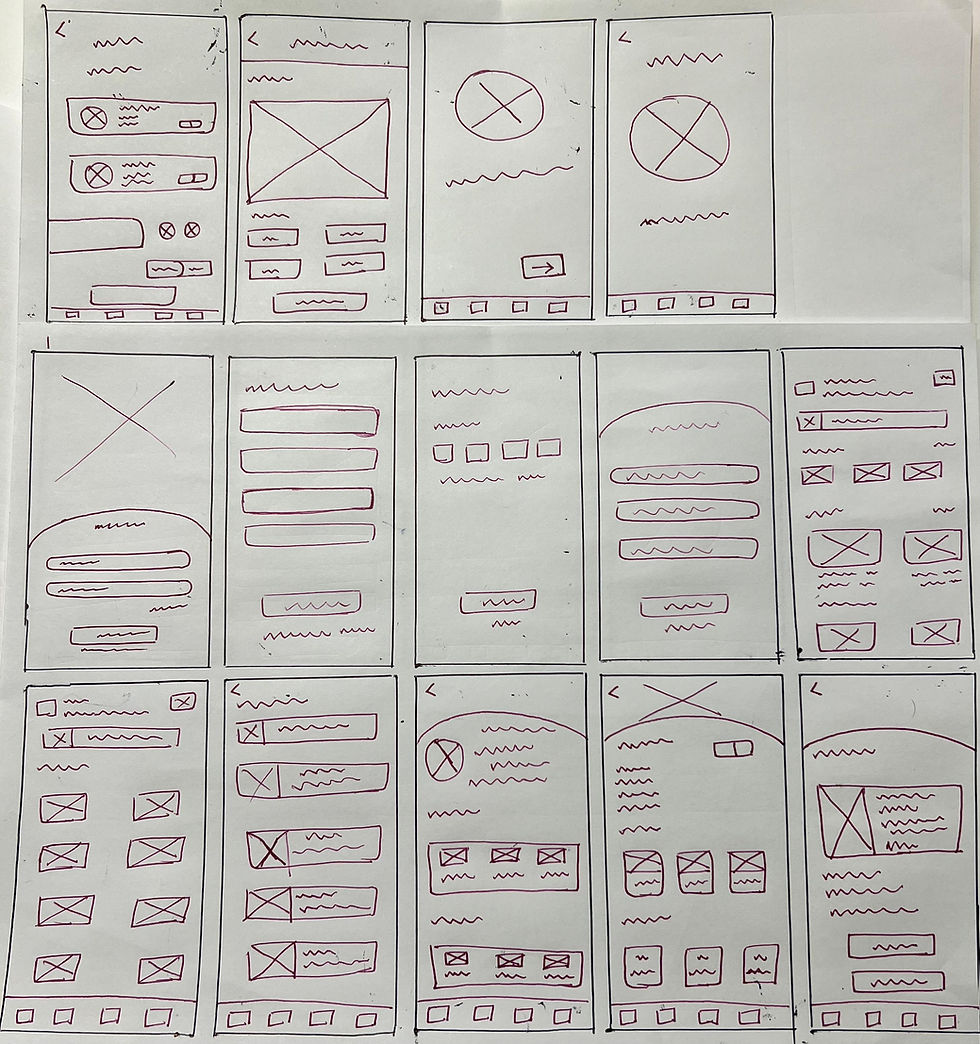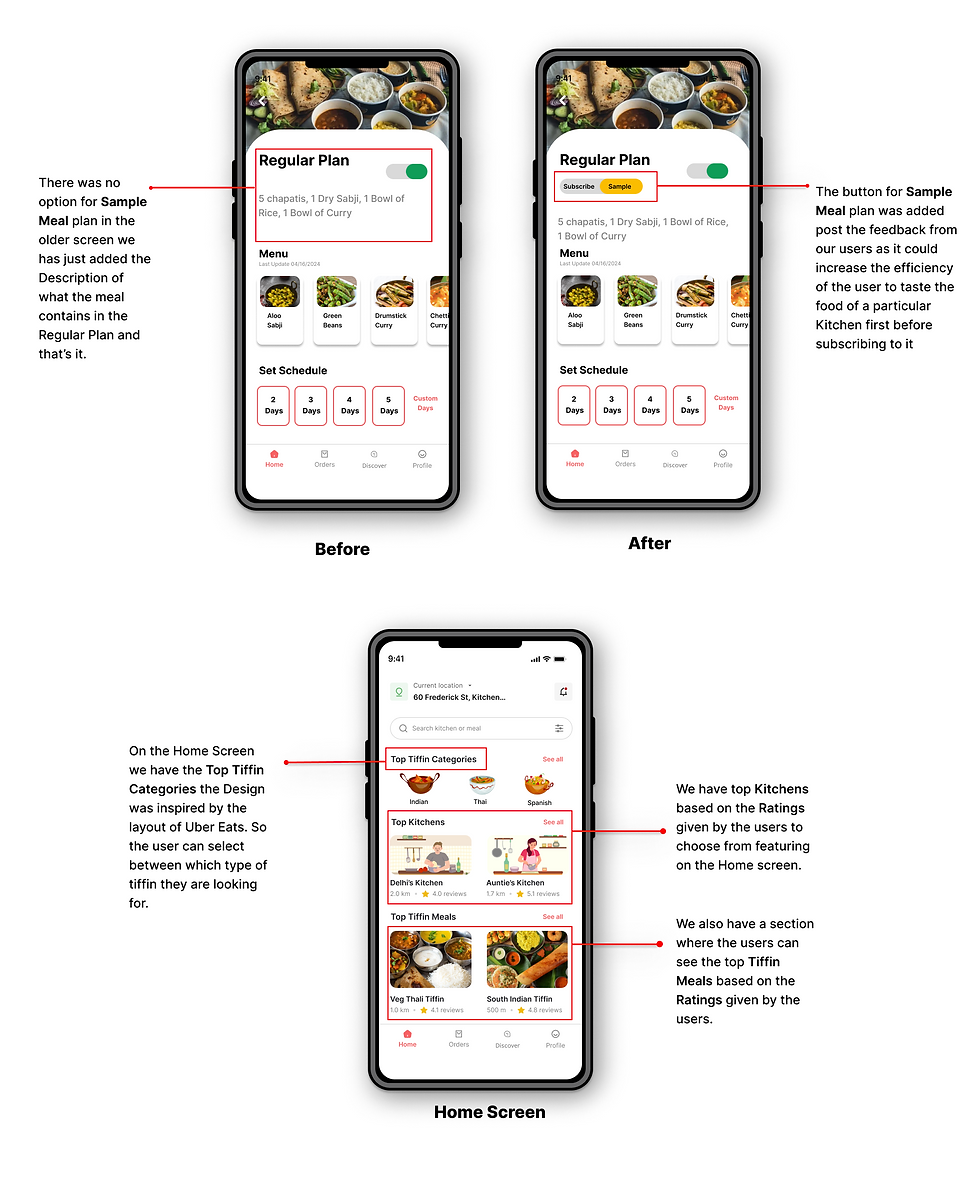Sushmita Pereira
Innovative Designer
.png)
Mobile App, UX Case Study
Hoomley
Hoomley is not just your another food delivery application, what makes it unique is the fact that it lets it users experience homemade meals
Project Overview & Timeline
January 2024 - April 2024
Helping People Experience Homemade Healthy Food
This project was my first real deep dive into the world of UX, and I remember it vividly. We were assigned to work in teams of five, but there was a twist—while we collaborated as a team, each of us was responsible for developing our own individual design process. It was both exciting and challenging, knowing that I’d be responsible for my unique take on the project as part of the assignment.
So, with that in mind, let me take you through my journey, step-by-step, and share how I approached this project from start to finish.
Problem Selection
💡 1. Team Brainstorming Sessions
The challenge was only three people worked on this project including me, we discussed real time problems through our group meetings identifying loop holes and doing gap analysis and coming up with all raw ideas on paper.
🎯 Goal: Spark fresh ideas and align the team on potential directions.
🔍 2. User Interviews & Observations
We decided to interview our very own classmates and people from college - our users to uncover their pain points, needs, and challanges.
🎯 Goal: Discover authentic, user-centered problems rooted in lived experiences.
🗳️ 3. Team Voting / Dot Voting
Once we’ve gathered potential problem areas, we use dot voting methods to prioritize ideas that resonate most with the team—balancing the interests impact, and feasibility.
🎯 Goal: Build consensus and focus on the most promising problem.
The Problem
International students and working professionals often struggle to cook for themselves while balancing studies and part-time work. Many also lack the skills or knowledge to prepare their own traditional cuisine, making it challenging to maintain a balanced diet and connect with familiar flavors.
My Role
🧩 UX Researcher
Interviewing people
Gathering Results & Analyzing
Drawing Assumptions and Hypothesis
Strategic Approach
How we are Solving this real world Problem from a User's Perspective
We brainstormed drawing up Assumptions and Hypothesis along with the “How Might We…” prompts, prioritizing ideas through card sorting and user flow diagrams. Our top goal was
Creating a digital platform connecting local kitchens of people who love cooking and make homemade meals and would love to share their food with those who don’t find the time to cook at a reasonable and affordable price.
Through this platform (application) students/professionals can subscribe for a homemade tiffin service and enjoy healthy homemade food.
UX Storyboard

These scenes illustrates the UX storyboard, showing how the envisioned app will support students. It captures the journey of how the app simplifies their lives, addressing their needs and challenges to make daily routines easier and more fulfilling. The sketches are rough and were drawn during the first initial phase of the project.

Wireframes
Making low fidelity and high fidelity screens

🛠️ UI Tester
Interviewing people Testing the finalized frames
Recording the test results and fixing the loopholes
Timeline: 4 month (January 2024 - April 2024)
Initial Phase
The Problem
Proto Personas
Empathy Maps
Questionnaires (How, Might, We)
Discussion & Final Proposed Solution
Core Hypothesis
UX Story Board
Competitive Analysis
User Flow & User Journey Maps
Low Fidelity Wireframes
Mid Fidelity Wireframes
High Fidelity Wireframes
Conducting User Testing
Design Changes after User Feedback
This project was my first real deep dive into the world of UX, and I remember it vividly. We were assigned to work in teams of five, but there was a twist—while we collaborated as a team, each of us was responsible for developing our own individual design process. It was both exciting and challenging, knowing that I’d be responsible for my unique take on the project as part of the assignment.
So, with that in mind, let me take you through my journey, step-by-step, and share how I approached this project from start to finish.
We started off by gathering as a team to brainstorm, diving into a sea of real-world problems that we thought could be tackled with a digital solution. Naturally, we leaned toward people who shared our experiences—students like us. We talked about the everyday struggles we face, and one issue kept popping up: proper nutrition. With packed schedules and limited budgets, students often fall short on balanced meals, so we decided to focus on improving nutrition intake. Our initial interview questions centered around understanding how students like us managed their daily nutrition.
But something interesting happened as we started interviewing our classmates and others around campus. While nutrition was a concern, a new challenge started to surface repeatedly in our conversations. It was more than just nutrition—it was the struggle of balancing studies, work, and, above all, finding time to cook. This was a moment of insight, and it shifted our perspective entirely. Our focus began to evolve as we realized there was a deeper issue impacting students’ lives in ways we hadn’t fully considered before.
International students and working professionals often struggle to cook for themselves while balancing studies and part-time work. Many also lack the skills or knowledge to prepare their own traditional cuisine, making it challenging to maintain a balanced diet and connect with familiar flavors.
Based on the interviews and insights gathered from listening to people, I created some proto-personas and developed empathy maps.



-
How might we optimize the culinary resources and facilities accessible to international students to improve their ability to create or have healthy meals while staying within their budget?
-
How might we teach and empower international students to learn basic cooking skills so that they can make basic healthy food for themselves?
-
How might we foster a community-driven approach in which international students share recipes, food preferences, to help each other have nutritious meals?
-
How might we use technology to create a platform or app that provides individualized meal planning assistance for international students, taking into account available resources, and economic constraints?
After a group discussion where each member shared their "Crazy 6" ideas, we used the dot-voting technique to collaboratively decide on the best approach. This process led us to our final proposed solution, one we felt could truly address the problem we set out to solve.
Through majority votes our team decided we would further work on the following solution: Creating a digital platform connecting local kitchens of people who love cooking and make homemade meals and would love to share their food with those who don’t find the time to cook at a reasonable and affordable price. Through this platform (application) students/professionals can subscribe for a homemade tiffin service and enjoy healthy homemade food.
Connecting User Needs with Kitchen Resources
Hypothesis: Users seek convenient, healthy dining options but lack time for cooking.
Solution: Connect individuals with spare time and cooking skills to users in need of home-cooked meals, establishing a shared kitchen service.
Reciprocal Relationships within Communities
Hypothesis: People are willing to share their culinary skills with community members and benefit from it.
Solution: Establish a mutual aid network through the app, encouraging cooperation and sharing among community members to promote healthy eating and community bonds.
Digitization and Sharing Economy in the Food Industry
Hypothesis: Digital technology can facilitate easier access to food while encouraging sustainable dietary choices.
Solution: Integrate traditional home cooking with the modern sharing economy through the app and online platform, providing users with more convenient, healthier dining options.



These scenes illustrates the UX storyboard, showing how the envisioned app will support students. It captures the journey of how the app simplifies their lives, addressing their needs and challenges to make daily routines easier and more fulfilling.
We conducted a competitive analysis of existing apps in the market, examining what they’re doing well to address the problem and identifying gaps where they fall short. Our research led us to the following insights and findings.
.jpg)
%20(2).png)
.png)
.jpg)


Once the high-fidelity screens were ready, we began usability testing to assess the application’s efficiency and gather user feedback. We wanted to understand what worked well and what needed improvement, so we started by testing with some of our classmates, then expanded to other students from the college to gain broader insights into the app. This feedback was essential in refining our design to better meet users’ needs.
Task 1: Place a food order
Description: After going through the registration process, enter the home interface, pick a suitable kitchen, select your tiffin to order and complete the payment process
Task 2 : Customize the day on which you would like the tiffin service in the app
Description: Assuming that you need tiffin on certain days when you can't make the time our to cook and would like to access the tiffin service on those days only which would make it efficient.
Iteration 1:
All three participants completed the task, with average times being 1 minute for task 1 and 1.5 minutes for task 2.
There user testing proved to be very insightful they helped us to understand our application and find out the loop holes in it that we could fix from the user's point of view.
User Outcomes:
Participant 1: "It's pretty simple, and the process is smooth, would have been nice if there was a choice for the same food ordering, like if I want to test the food first from the kitchen I am ordering from to get a better idea on how the food tastes and then subscribe to that kitchen to get my home made tiffin."
Participant 2: "Overall, there were no issues, whether as a buyer or a seller, the overall process is smooth, and it includes all the necessary content. However, what if I don't want to order tiffin everyday? I mean there are only some days I would like to get the tiffin service."
Participant 3: "I think it's okay, it's just that most food ordering apps have the problem of too many or too few choices, but this might also be my own issue. I think it does have the potential though to provide healthy and fresh homemade food rather than the fast food we normally order from restaurants."
.png)